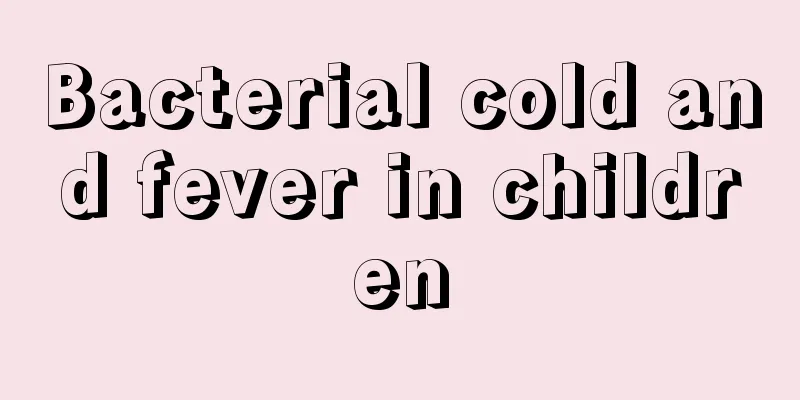Occult blood in children's urine routine

|
If a child has occult blood in urine, it means that the patient is likely to have symptoms of hematuria. Hematuria is a relatively common symptom. If hematuria occurs, whether in children or adults, after the problem of occult blood in the urine occurs, there may be kidney disease, urinary tract disease, systemic disease or disease of adjacent organs. Below, I will introduce to you the common causes of hematuria! 1. Kidney and urinary tract diseases (1) Inflammation: acute and chronic glomerulonephritis, acute and chronic pyelonephritis, acute cystitis, urethritis, urinary tract tuberculosis, urinary tract fungal infection, etc. (2) Stones in the renal pelvis, ureter, bladder, urethra, or anywhere else can scratch the urothelium as they move, which can easily cause hematuria and secondary infection. Large stones can cause urinary tract obstruction and even renal damage. (3) Tumors Malignant tumors in any part of the urinary system or in adjacent organs that invade the urinary tract can cause hematuria. (4) Trauma refers to violent injury to the urinary system. (5) Congenital polycystic kidney disease, congenitally thin glomerular basement membrane, nephritis, and the nutcracker phenomenon (this disease is caused by congenital vascular malformations that cause the left renal vein running between the abdominal aorta and the superior mesenteric artery to be squeezed, causing persistent microscopic hematuria. The right renal vein flows directly into the inferior vena cava, while the left renal vein must pass through the angle formed by the abdominal aorta and the superior mesenteric artery to flow into the inferior vena cava. Normally, this angle is 45° to 60°. If this angle is congenitally too small or filled with mesenteric fat, enlarged lymph nodes, or peritoneum, it can cause the nutcracker phenomenon. Diagnosis is mainly based on CT, B-ultrasound, and renal venography. Treatment requires surgical correction). 2. Systemic diseases (1) Hemorrhagic diseases: thrombocytopenic purpura, allergic purpura, hemophilia, leukemia, malignant histiocytosis, aplastic anemia, etc. (2) Connective tissue diseases: systemic lupus erythematosus, dermatomyositis, polyarteritis nodosa, scleroderma, etc. (3) Infectious diseases: leptospirosis, hemorrhagic fever, filariasis, infectious bacterial endocarditis, scarlet fever, etc. (4) Cardiovascular diseases: congestive heart failure, renal embolism, and renal vein thrombosis. (5) Endocrine and metabolic diseases: gouty kidney, diabetic nephropathy, and hyperparathyroidism. (6) Physical and chemical factors such as food allergies, radiation exposure, drugs (such as sulfonamide, phenol, mercury, lead, arsenic poisoning, large-scale infusion of mannitol, glycerol, etc.), poisons, and after exercise. 3. Diseases of adjacent organs Tumors from the uterus, vagina, or rectum that have invaded the urinary tract. |
<<: What to do if children have visual fatigue
>>: What to do if your child has fungal infection
Recommend
Sequelae of lumbar puncture in newborns
The last thing parents want to see is a newborn g...
How to test for jaundice at home
In fact, neonatal jaundice is one of the most com...
How to treat facial eczema in newborns
It is very common for newborns to have eczema on ...
How many times a day should a 50-day-old baby poop?
After birth, newborns will defecate almost every ...
What causes jaundice in children?
Children's health is generally recognized as ...
What are some ways for students to restore their vision?
When you walk into the campus, you will find that...
How to treat children crying at night
Children crying in the middle of the night often ...
Will eating bird's nest cause early puberty in children?
Generally speaking, children can eat bird's n...
Treatment of dry eyes in children
I wonder if mothers have noticed that their child...
What is going on when a baby blows bubbles?
In life, many mothers find that their babies blow...
What is the cause of the red pimples on the child's body?
If a child has red bumps on his body, parents nee...
What kind of soup is good for a one-year-old baby?
When the baby reaches one year old, he can genera...
When will the child speak?
Many mothers start planning their children's ...
A brief discussion on children's fever recipes
Taking care of a child is a very hard job, which ...
How to correct a child's overbite
Overbite is a dental deformity caused by incorrec...









